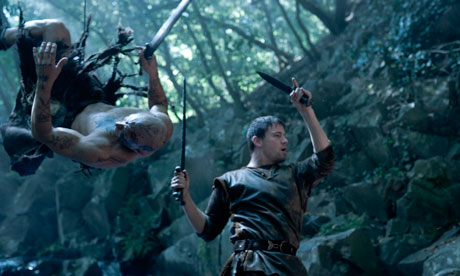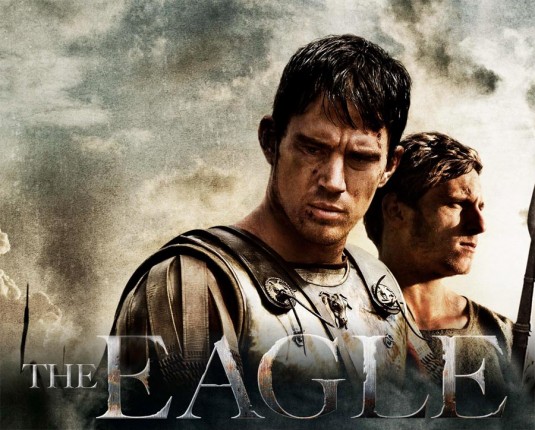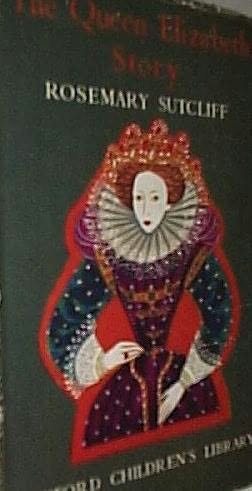This article was on the Historical Novel Society's webpages for some years, but due to a recent revamp of the website it has been removed. It was originally published in Solander 8, December 2000, 2-6.
Rosemary Sutcliff: an appreciation
Rosemary Sutcliff was born in a blizzard on 14 December 1920. The place was East Clandon in Surrey and in her autobiography, Blue Remembered Hills (1983), she is rather rueful about having been born in Surrey, feeling that the West Country was really her home. Her father was in the Navy, though there were many doctors amongst her ancestors, plus a few farmers and Quaker merchants. Her mother’s brothers all went to live in India to spend their lives working on building railways.
As a child she had Still’s Disease, a form of juvenile arthritis. The effect of this led to many stays in hospital for painful remedial operations. As a very young girl, the arsenic in her medicine caused her to have hallucinations; she saw a panther, wolves and snakes despite not knowing what they were. However, years later, she was to meet them in Kipling’s books. Another effect of illness was that she spent much time sitting still looking, rather than moving around and investigating. This meant that she developed an acute eye for observation. Alan Garner (Wintle 1974, 224) comments that children’s authors often have two things in common – they were deprived of the usual primary schooling and they were ill and left to their own company, which was certainly true of Sutcliff.
Due to her father’s postings she moved frequently – living in Malta, Streatham (London), Chatham Dockyard, Sheerness Dockyard and North Devon. She had an uneasy relationship with her mother, but admitted that “very few of the worthwhile things in this world are all easy”. Her mother disciplined her rigorously, so that the child Sutcliff would take her spankings in proud silence, and later in life found it very difficult to cry, believing it shameful.
Her mother read to her very willingly, and never got tired of reciting stories. Sutcliff was reared on a diet of Beatrix Potter, A.A. Milne, Charles Dickens, Hans Anderson, Kenneth Grahame and Rudyard Kipling. She was read Norse, Celtic and Saxon legends, and also historical novels which her mother loved. Surprisingly, Sutcliff did not learn to read until the age of nine.
After the period of travelling, the small family finally settled down to live in the Devon area. For Sutcliff, these years alternated between hospital and school. One of the hospitals had a Guide pack; the only badge that Sutcliff won was the Artist’s Badge. In the hospital library she found a book that proved to be the treasure of her childhood. Called Emily of New Moon, it was a Canadian novel that followed a girl’s adventures and her attempts to be a writer. When she left hospital, she left the book behind, and then much later tried to trace it, but did not recall the author. It was eventually found for her in the 1970s by a Canadian friend who was doing a piece on the work of L.M. Montgomery. The author of Anne of Green Gables had also written Emily of New Moon.
Sutcliff ended her formal education at fourteen, and went to Bideford Art School. She passed the City and Guilds examination, and was advised to make the painting of miniatures her profession. Now that she was considered an adult, any operations she had took place in nursing homes. These she found very lonely, mostly having the companionship of aged ladies when she really needed friends of her own age. She was eighteen when the Second World War broke out. Her father went to command convoys, while she and her mother stayed in Devon. Sutcliff had a miniature displayed at the Royal Academy, and not surprisingly, the subject was a knight in 15th century armour.
Around the middle of the War, Sutcliff “got the itch” to write. She felt cramped by the small canvas of miniature painting, and turned to writing to gain a larger vista. The first story she could remember writing was Wild Sunrise, a story about a British chieftain faced with the invasion of the Romans. In her autobiography she stated that she was happy that the story is now lost, as she felt that it was badly written, having too much of herself in it. She did regret the loss of her next story, which was set in the 18th century. It concerned a little girl sent to stay with her Great Aunt who befriends an embittered young man. Some of its themes re-emerged in The Eagle of the Ninth years later.
Not long after the end of the War, Sutcliff wrote a re-telling of Celtic and Saxon legends which she showed to an old friend. He sent them to Oxford University Press (OUP). Although they rejected the manuscript, they requested that she write a version of the Robin Hood Story.
It was during this period that she met Rupert, who had been an RAF pilot. He was married, but showed clear interest in Sutcliff. They spent the summer together, but in the autumn he went to work in London. They corresponded throughout the winter, but when he visited in the spring, Sutcliff had a sense of foreboding. It turned out that Rupert had met another woman whom he eventually married when his divorce came through.
Sutcliff had finished The Chronicles of Robin Hood and sent it to be typed up. It took eighteen months for the manuscript to be returned to her, during which time she had written The Queen Elizabeth Story and sent it on to OUP. This book was a subject choice of her own, and she found it a delight to write. It was accepted, and the two books were eventually published in the same year, 1950.
This is where Blue Remembered Hills finishes, but she stated that from 1950 onwards she kept a diary, and that she met Rupert again twenty years later. This infers that producing another volume of autobiography was perhaps on her mind. Her mother died during the 1960s, and Sutcliff and her father moved to Sussex. Despite being increasingly disabled, she travelled abroad and visited Greece. Her father died in the early 1980s.
Thereafter, she lived near Arundel with a housekeeper and two small dogs (Talcroft 1995, 146). These dogs were Chihuahuas. In 1984 when one of the dogs died, Sutcliff waited for a decent time before getting another one to be a companion to the surviving dog, Sebastian. She was waiting in the hope that the spirit of the dog that had died would perhaps be reborn into another dog that she might own in the future. This belief in reincarnation had been expressed elsewhere. Sutcliff said that perhaps the reason authors are drawn to certain eras was that they had experienced them in a previous life, so that they were essentially writing about what was familiar (Fisher 1974, 89). When someone said to her that she would perhaps be a soldier in another life, in reference to Sutcliff's heroes often being warriors, she instantly replied “No thank you, I had enough of soldiering”. It was as if it was something she remembered (Thompson 1987, 14).
Sutcliff was writing the morning that she died on 23rd July 1992. She had completed the second draft of a novel (published in 1997 as Sword Song), with two more works waiting to be published.
Writing
Margaret Meek wrote about the process by which Sutcliff started her novels (1962, 12). The idea for a story might come from an external source, such as visiting a house and wondering what the previous occupants might have been like when it was new, or perhaps inspiration would come from something Sutcliff had read. Sometimes the idea would come from the inside, completely out of the blue.
Sutcliff used large red notebooks to make her research notes in. An encyclopaedia would be the first port of call, which would in turn provide a reading list. This would be presented to the local library, and when those books arrived they could be mined for the bibliographies in the back, as well as the information in the main part of the works. All the sifted information would find its way into the red notebooks. Then Sutcliff would start to create a picture of the daily life of the era her idea was set in. This was the most enjoyable part for her. Not much of the plot would find its way into the notebooks, as Sutcliff would make a draft outline of around two or three thousand words, and then she would start to write. Ordinarily, she would write from mid morning until nightfall.
Sutcliff tended to write the drafts of her novels in longhand (Moss, 1992), producing three drafts plus a fair copy. She often wrote 1,800 words per day in a small clear script on a single folio sheet. Her pen was “fattened” and cushioned so that her arthritic hand could guide it easily (Moss, 1992). The process of producing a whole book would take a couple of months’ research, followed by around eight months’ writing.
Sutcliff wrote over fifty books (see the list at the end of this article), some of which were translated into fifteen languages. She also wrote plays for the radio and stage.
Evans-Gunther points out that a virtual family tree of the Aquila family can be compiled because the connections are so well illustrated (1993, 7). The line runs clearly from Marcus Aquila in Eagle of the Ninth (129AD) to Owain in Dawn Wind (6th century), with the ring appearing in the other books though not obviously connected to Aquila’s descendants. Sutcliff stated that she had a “ ... terrific thing about continuity” (Fisher 1974, 186), so it is likely to be a very deliberate strategy. As well as the Dolphin ring, she set The Knight’s Fee (11th century) and Warrior Scarlet (Prehistoric) in the same hills, and used a flint axe in both stories to indicate the historical ties to that land (Fisher 1974, 186).
Continuity is very much a Kipling tradition; he acknowledges the settling of England by many peoples, and the way they eventually learn together to create a new nationality (1962, 52). Also, Kipling emphasises the rite of passage from youth to adulthood. Sutcliff was happy to admit her debt to Kipling, and wrote an appreciation of him in 1960.
Barbara Talcroft’s important study of Sutcliff’s works with reference to this aspect picks out three major elements in her writing: Goddess, Sacrificial King and Maimed King. The relationship that a king has with the Goddess provides him with his legitimacy as a rule. The Goddess can take many forms and represent various aspects of life. For example, she can be a maiden, a consort, or a hag, and these can be linked with the phases of the moon: the crescent moon being the goddess of birth and growth, the full moon the goddess of love and war, and the waning moon being associated with the hag of divination and death (Talcroft 1995, 25).
The sacrificial king has an obligation to sacrifice himself for the good of his people and the land. The maimed king is a danger to his people as he might cause the kingdom to become a wasteland.
A novel that contains all three of these in good measure is Sword at Sunset, published in 1963. This novel is about King Arthur, or Artos as Sutcliff called him. The goddess appears in Ygerna (Artos’ half sister with whom he unwittingly commits incest), Guenhumara (whom he marries) and the Virgin Mary (who is symbolised by a moon daisy which is worn by Artos and his Companions as they go into battle).
The maimed king is Artos who fathers a child with his half sister. He sees this as a great sin and becomes impotent. Though he does father a daughter eventually, both his children are maimed in different ways. The daughter is sickly and dies in circumstances that cause a further rift with Guenhumara (so that he is effectively in discord with the goddess and the land). His son, Medraut, is maimed in character, being twisted by hate instilled by Ygerna, and seeks to undermine and destroy Artos.
Artos is also the sacrificial king, dedicating himself to his people and land, and eventually dying for them. However, the most obvious example of sacrificial kingship in the book is Artos’ uncle, the High King Ambrosius. In the book’s prequel, The Lantern Bearers (1959), the young Ambrosius rejects marriage saying that “ ... To lead Britain is enough for one man, with a whole heart and no ties”, which is his first sacrifice. In Sword at Sunset he falls ill with cancer, and chooses to die hunting, trying to kill a royal stag – both Ambrosius and the stag are portrayed as sacrificial kings.
Looking at Talcroft’s analysis (1995, 126), it is clear that the kingship themes became most developed in the early 1960s, culminating in Sword at Sunset in 1963, and The Mark of the Horse Lord in 1965. After this time, the themes are still present in one form or another, but not so marked.
Sutcliff always became deeply involved in her books, but Sword at Sunset engaged her more heavily than any other book she wrote (Thompson, 1987, 13). It took some eighteen months to write, and absorbed her completely. She would write from 6am one morning until 2am the following morning, finding the process completely addictive. Usually writing in the third person, Sutcliff found she had trouble with this book, and only became satisfied with it when she wrote in the first person. It was the first time she had done this, but it seemed the best and only way. After finishing the book, it took her several weeks to get back into her own skin, after thinking herself so completely into the character of Artos.
Sword at Sunset is deservedly one of the most admired historical novels about King Arthur (Thompson 1985, 47). Though some traditional aspects of the legend are retained, Sutcliff discards those that she deems to be rather late additions, so that, for example, Bedwyr takes the part later played by Lancelot. Along with The Lantern Bearers, it is among some the first attempts at an historical setting for King Arthur. Rather than a just a Celtic setting, Sutcliff also fully acknowledges the strong role that those who had adopted Roman culture (and would have called themselves Roman) would have played in the fifth century. This is still a relatively unusual viewpoint, and it has barely been explored in historical fiction for this period since Sutcliff (Nastali 1999, 19). Combining as it does primitive mythological elements, allied with solid archaeological research, Sword at Sunset is a deeply satisfying book.
That Sutcliff is still an influential and well-respected historical novelist is evident. Recently, Helen Hollick has made a deliberate nod toward Sutcliff and her last book Sword Song where the hero has many ship-borne adventures. In Harold the King, about the last Saxon king of England, Hollick named the lead ship in the Saxon fleet patrolling the English coast Dolphin as tribute to the linking emerald Dolphin that appeared in so many of Sutcliff’s novels.
In her 1960 monograph, Sutcliff laments that Kipling has gone out of style (Talcroft 1995, 2). The same may now perhaps be said of Sutcliff. Harrison, reviewing Hollick’s Arthurian novel The Shadow of the King comments that Sutcliff’s Sword at Sunset is: “... obviously now dated in many ways.” (Harrison 1998, 4). This is in particular reference to Sutcliff’s “telling” rather than “showing” style of writing, and Harrison herself finds the stories enthralling (Harrison pers comm). Although the “telling” style of writing does not detract in any way from the skill and beauty of Sutcliff’s prose, modern readers are often more used to the story being shown to them.
In the case of the Arthurian period novels there are now new theories, and stories that reflect them. Sutcliff’s Roman books for children are still in print, but other categories have not fared so well. In particular, her adult books are mostly out of print, with Sword at Sunset currently only in print in the US by Tor Publishers.
http://blueremembered.blogspot.co.uk/2005/06/dark-age-novels-of-rosemary-sutcliff_11.html ;
http://blueremembered.blogspot.co.uk/2005/06/dark-age-novels-of-rosemary-sutcliff_23.htmhttp://blueremembered.blogspot.co.uk/2005/06/dark-age-novels-of-rosemary-sutcliff_23.html ]
Garside-Neville S. and Hunter-Mann K. 1985, “Rosemary Sutcliff “ Dragon Society Newsletter Vol 2, No 1
Sutcliff R. 1992, Blue Remembered Hills: a recollection Farrar, Straus and Giroux
1989 Little Hound Found
Sandra Garside-Neville is a reviewer for the Historical Novel Review, though she was given a sabbatical (!) to research and write this article. She's a professional librarian and a freelance archaeologist. The photograph of Rosemay Sutcliff on the front cover of Solander is from her private collection.














